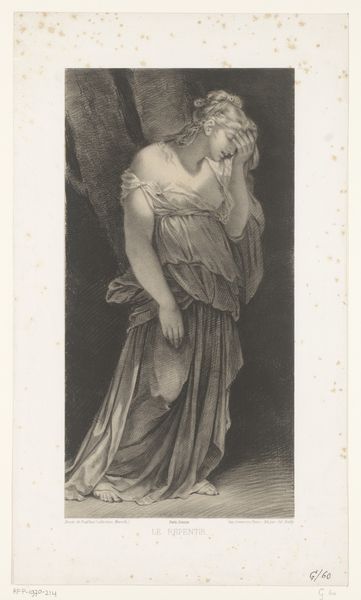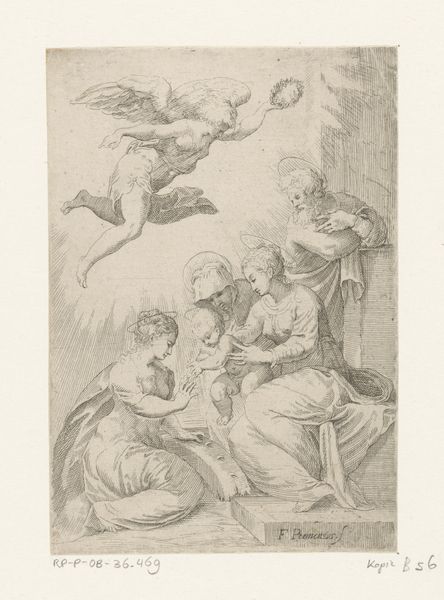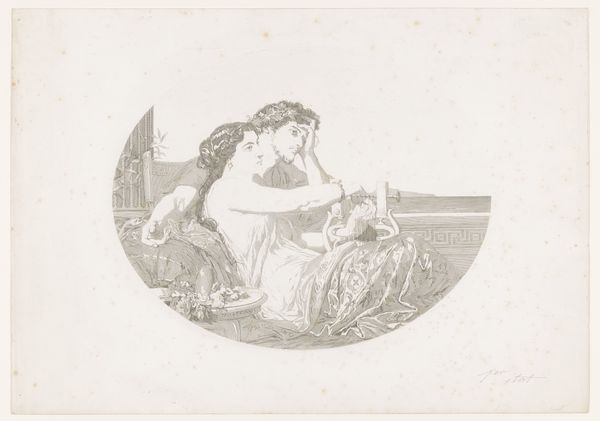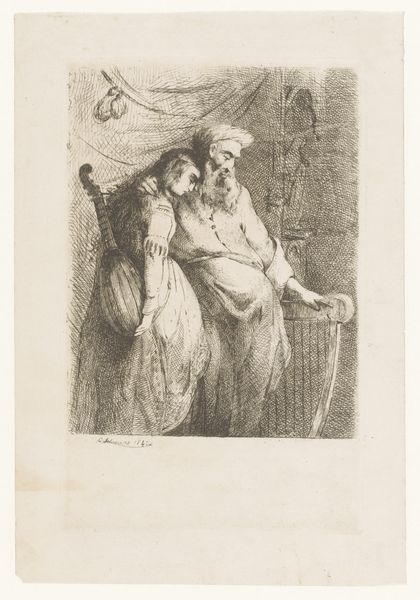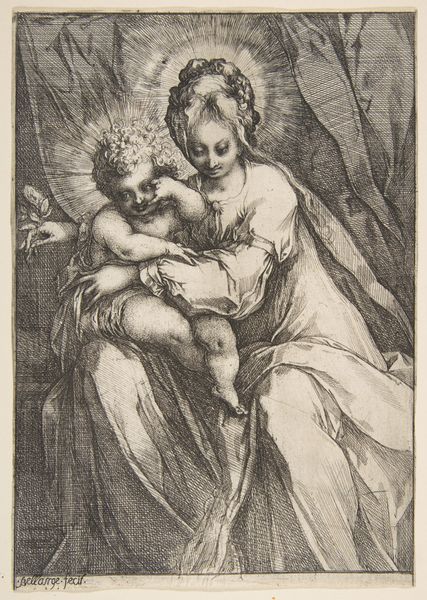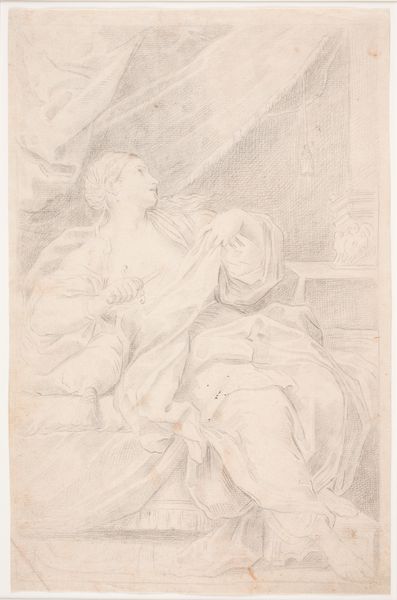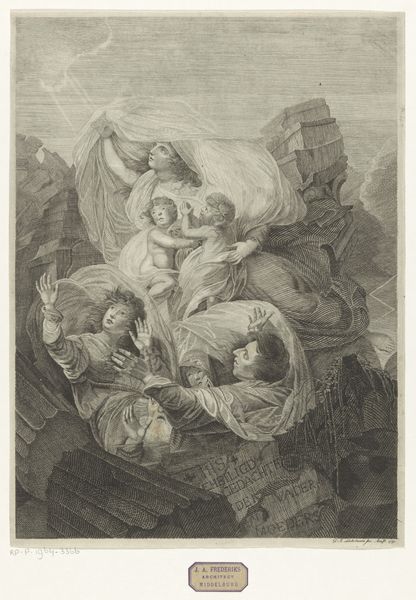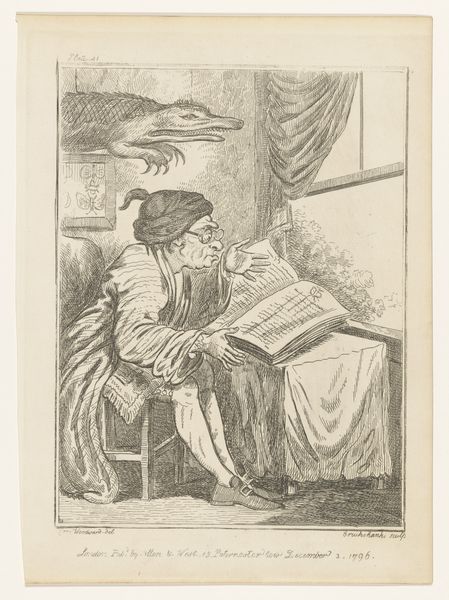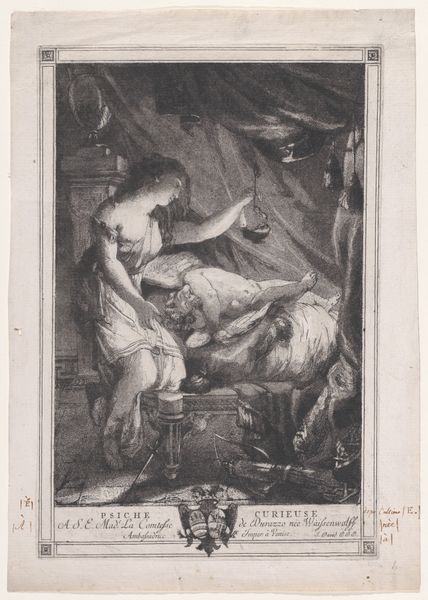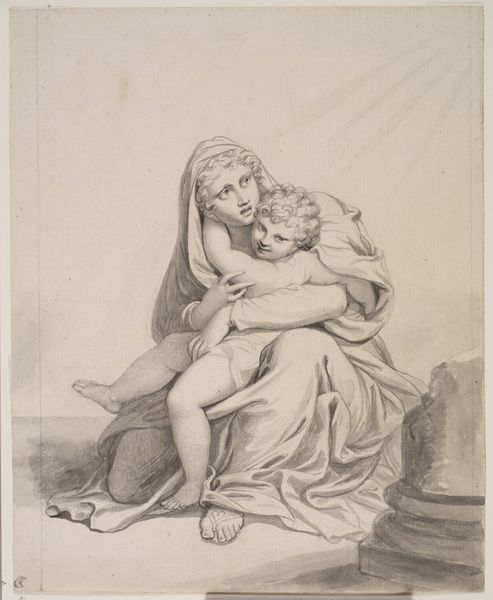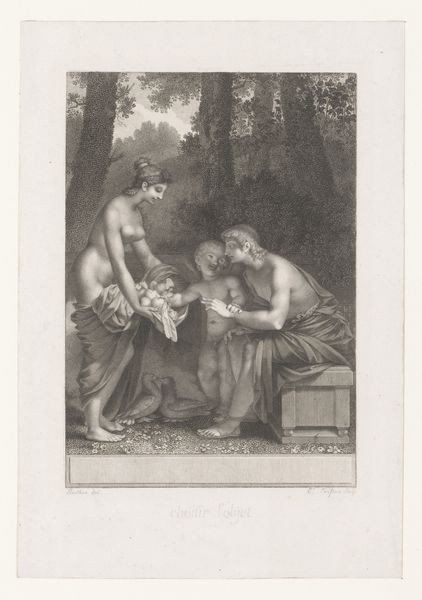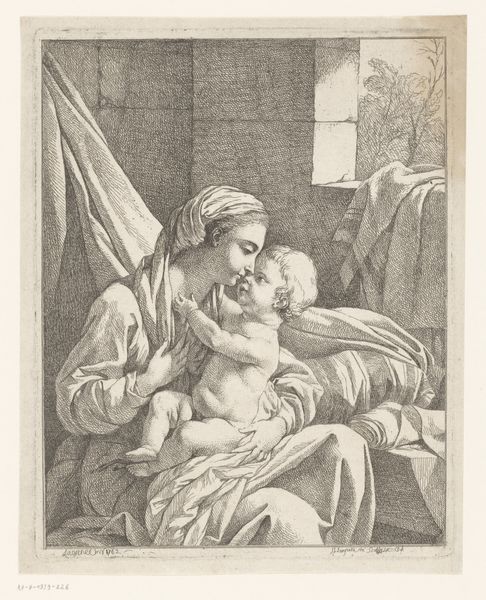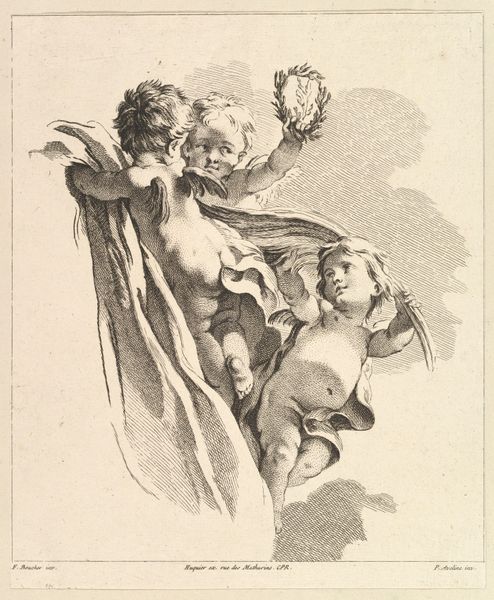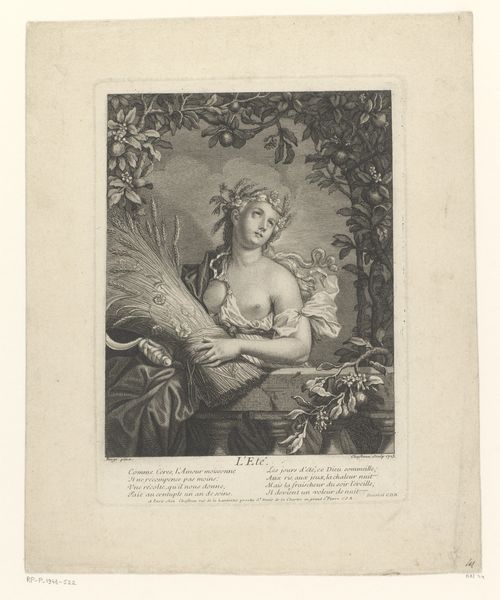
engraving
#
portrait
#
allegory
#
baroque
#
caricature
#
portrait reference
#
engraving
Dimensions: height 403 mm, width 287 mm
Copyright: Rijks Museum: Open Domain
Curator: Looking at this engraving, I am struck by the texture achieved through line work alone. The contrasting light and shadow give depth to the figures. Editor: Indeed. This is "Schilderkunst bekroond" created between 1621 and 1676 by Theodor Matham. What strikes you most about the overall composition? Curator: The artist uses a central focus of Painting who holds her palette and an infant Cupid is placing a wreath on her head, which creates a sense of dramatic action despite it only being two figures. How might we examine this artwork historically? Editor: Well, engravings like these often served a dual purpose: to celebrate art and artists but also as a form of visual communication and social commentary during its time. This work clearly presents Painting as the noblest of pursuits. How do you perceive the allegorical elements at play? Curator: Semiotically, we could read Cupid’s gesture of crowning as the divinely inspired and timeless value of art. The tools arranged in the background are more than mere studio props; they function as signifiers of skill, dedication, and the classical education. Is this symbolic representation typical? Editor: During the Baroque period, personifications and allegories were very much in vogue, communicating values, ideal concepts, and morality through symbolism, making it quite reflective of broader cultural and political themes. The glorification of professions through mythological symbolism reflects this period’s ambitions and artistic culture. Curator: Precisely. Considering its style, do you find the artist's approach somewhat academic? Editor: Undoubtedly so. Matham seems less interested in raw emotional expression, favoring instead structured refinement. I found myself really drawn into the textures the engraver achieved on those draperies. Curator: For me, the lasting intrigue comes from the layering of textures on a monochrome medium—quite the technical feat. Editor: Indeed, Matham encourages a slower engagement, inviting analysis rather than immediate emotional response.
Comments
No comments
Be the first to comment and join the conversation on the ultimate creative platform.
